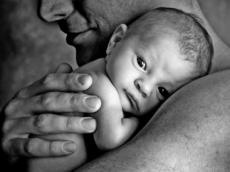Today.Az » Society » Azerbaijan crowns Europe for birth rate
10 January 2014 [11:31] - Today.Az
 By AzerNews
By AzerNews
The Europe's rate birth has reached a climax in Azerbaijan, putting the country at the top of the natural population growth of the continent.
A report by Azerbaijan's Health Ministry shows that the country's birth rate has increased from 13.9 to 18.6 per mil in the past ten years.
The figures also show that during the same period, the mortality rate has decreased from 6 to 5.9 per mil, including a reduction in infant mortality from 18.5 to 14.5 per mil.
"As a consequence, the natural population growth increased from 7.9 to 12.7 per mil in 10 years, which is the best indicator in Europe," the report said.
At the same time, budget allocations for related medicine increased by 11 times, amounting to 725 million manat in 2014, which is 8 percent higher compared to 2013.
Generally speaking, the demographic situation is always an accurate reflection of what is happening in the country. Demographic stability in the country is perceived as a sign of internal stability and prosperity.
The World War I, as well as revolutionary upheavals had negatively impacted population growth in Azerbaijan at the beginning of the 20th century. Moreover, foreign intervention, the civil war, and mass repression that swept the country in the 1930s negatively affected the demographic indicator (about 30,000 people were killed).
Azerbaijan's loss of about 300,000 people during the World War II was one of the main reasons that led to a decline in population. During this period there was a powerful emigration of the population, and the pre-war level of the population was restored only in 1955.
Late 1980s was a difficult time for the Azerbaijani people. The Nagorno-Karabakh war and the unstable economic situation in the country also negatively affected the demographic indicator of Azerbaijan. Many men of military age went to war, while many others had to leave the country in search of job abroad.
The effects of relative stability can be observed in the mid-1990s. In 1980, the Azerbaijani population was about 6.1 million, while the figure reached about 7.6 million in 1995.
Azerbaijan's population has been growing annually by an average of 1.2 percent since 2005. In 2013, the fertility rate in Azerbaijan rose from 13.9 to 17.4 per mil and the death rate decreased from 6 to 5.3 per thousand people. The rate of natural population growth increased from 7.9 to 12.1 per mil, which is the highest indicator among the countries of Europe.
Today, the average life expectancy of Azerbaijan's population is 72.2 years, with 75.0 years for women and 69.4 years for men.
The statistical data also shows signs of the emergence of baby boom generation in Azerbaijan. In the first half of 2013, about 83,000 children were born (53.6 percent of them were boys and 46.4 percent girls). Most families make decisions to have a second or even a third child based on their own ability to make a living instead of the government subsidies.
Thus, Azerbaijan has set a good record in the first half of 2013 compared to the past decade. Improvement of the demographic situation shows greater confidence in Azerbaijanis future.
|
|